Pine nuts are like gold in the kitchen—pricey and prized for their taste.
Yet, sometimes they’re as hard to find as actual treasure. We’ve all been there, ready to whip up that dream pesto, only to find the pine nut stash glaringly empty.
Good news, though: Running short on these gems doesn’t mean abandoning ship on your culinary quest.
In fact, it’s a chance to get creative and maybe, just maybe, stumble upon a new favorite.
We’re here to guide you through selecting the perfect stand-in for pine nuts—a switch-up that could add an unexpected twist to your recipes.
From nuts that bring the crunch to seeds that surprise you with their flavor, there’s a whole pantry of potential waiting to be unlocked. Ready to dive in?
What are Pine Nuts?

Have you ever wondered what those little white seeds are in some trail mix and granola bars? Those are called pine nuts, and they come from a group of evergreen trees known as cone-bearing trees.
The most common type of pine nut is the European pine nut, which comes from the stone pine tree.
Pine nuts are a source of healthy fats, protein, and fiber, and they have a sweet, nutty flavor that makes them a popular addition to many dishes.
In addition to being eaten as a snack, pine nuts can be used in pesto sauce, baked goods, and more recipes.
So next time you see a bag of pine nuts at the store, don’t hesitate to give them a try.
You might just find that you’re a fan.
The 5 Best Substitutes for Pine Nuts
For those allergic to pine nuts or simply can’t find them at the store, never fear.
There are plenty of substitutes that will work just as well in your recipes.
| Substitute | Key Characteristics | Substitute Ratio |
|---|---|---|
| Pistachios | Nutty flavor with a slightly sweet and vibrant green color | Use an equal amount of pistachios as a substitute for pine nuts |
| Walnuts | Earthy flavor with a slightly bitter note | Use an equal amount of walnuts as a substitute for pine nuts |
| Almonds | Mild, slightly sweet flavor with a crunchy texture | Use an equal amount of almonds as a substitute for pine nuts |
| Cashews | Creamy and buttery flavor with a soft texture | Use an equal amount of cashews as a substitute for pine nuts |
| Hazelnuts | Rich, nutty flavor with a slight sweetness and a crunchy texture | Use an equal amount of hazelnuts as a substitute for pine nuts |
When it comes to enhancing your recipes and finding substitutes for pine nuts, consider these five options:
1 – Pistachios
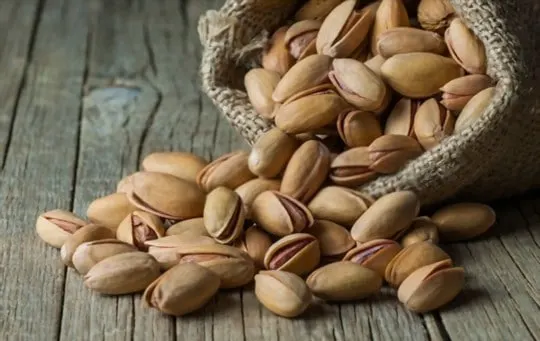
The pistachio is a small, round nut with a hard, green shell.
Native to Asia, the pistachio has been a part of human diets for thousands of years.
The nuts were even mentioned in the Bible, and they were a favorite treat of the ancient Greeks and Romans.
Today, pistachios are grown in warm climates worldwide, and people of all cultures enjoy them.
Pistachios are popular as snack food, and they are often used in desserts and other recipes.
Thanks to their distinctive flavor and nutritional value, pistachios are one of the world’s most popular nuts.
Use an equal amount of pistachios as a substitute for pine nuts in your recipes.
2 – Walnuts
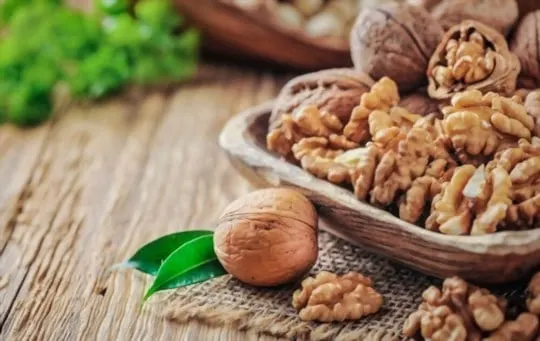
Few things are as satisfying as cracking open a fresh walnut.
The hard shell protecting the delicate nutmeat is a testament to the walnut’s enduring popularity.
These nuts have been cherished for their flavor and nutritional value for centuries.
Today, they remain an important part of many diets around the world.
Walnuts are a good source of protein, fiber, and healthy fats.
They also contain high antioxidants, which can protect against cell damage.
In addition, studies have shown that eating walnuts may help lower cholesterol and reduce the risk of heart disease.
Use an equal amount of walnuts as a substitute for pine nuts in your recipes.
3 – Almonds
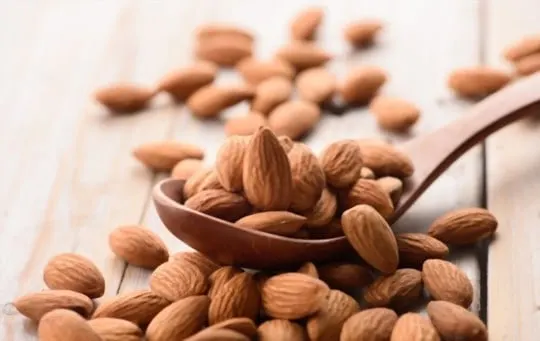
Almonds are a type of stone fruit native to Asia and the Mediterranean.
The almond tree is a member of the rose family, and its scientific name is Prunus dulcis.
Almonds are a popular ingredient in many dishes, and they are also used to make almond milk and oil.
Almonds are a good source of protein, fiber, and vitamin E, and they also contain magnesium, manganese, and copper.
Research has shown that almonds can help to lower cholesterol levels, reduce inflammation, and improve blood sugar control.
In addition, almonds have been linked to a reduced risk of heart disease and osteoporosis.
Use an equal amount of almonds as a substitute for pine nuts in your recipes.
4 – Cashews
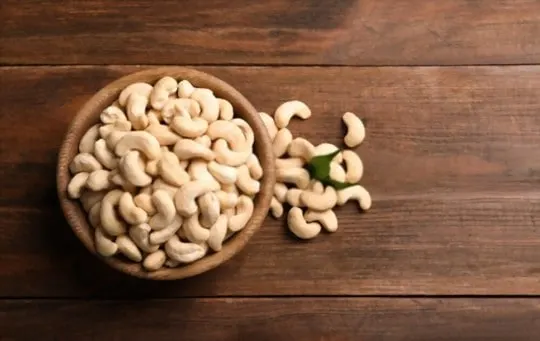
Cashews are a type of nut that is native to Brazil.
Unlike other nuts, cashews grow on trees that produce a fruit known as a cashew apple.
The apple is commonly used in beverages and jams, while the nut is often used in recipes requiring a creamy consistency, such as sauces and desserts.
Cashews are also a good source of vitamins and minerals, including magnesium, phosphorus, and zinc.
In addition, they are a good plant-based source of protein.
While cashews are generally safe for most people to consume, it is important to note that they can cause allergic reactions in some individuals.
Use an equal amount of cashews as a substitute for pine nuts in your recipes.
5 – Hazelnuts
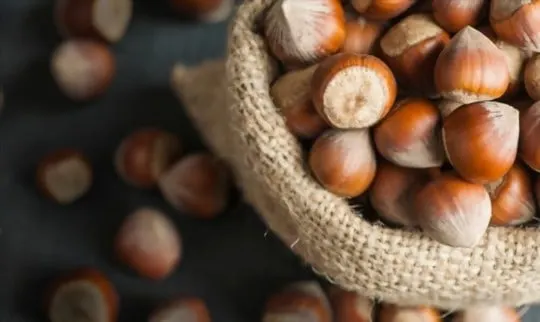
Hazelnuts are native to Eurasia and have been cultivated for centuries.
They are grown commercially in many countries, including Turkey, Italy, and the United States.
The hazelnut tree is a small deciduous tree that produces edible nuts enclosed in a green husk.
When the husks split open, they reveal a brownish-black nut with a smooth, glossy surface.
Few things are as satisfying as cracking open a hazelnut and enjoying the rich, creamy flavor of the nutmeat.
Hazelnuts can be eaten raw or roasted, and they are often used in baking and cooking.
In addition to their delicious taste, hazelnuts are also a good source of vitamins and minerals.
Use an equal amount of hazelnuts as a substitute for pine nuts in your recipes.
Conclusion
In conclusion, pinenuts are a great source of healthy fats, protein, and antioxidants.
They can be used in many different recipes and offer various health benefits.
While they may be expensive, several substitutes can be used in their place.
These substitutes include almonds, cashews, pecans, walnuts, and pistachios.
Each of these nuts has a similar nutritional profile and can be used in many same ways as pinenuts.
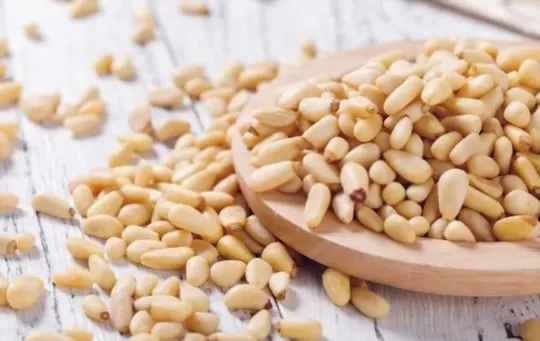
The 5 Best Substitutes for Pine Nuts
Ingredients
- Pistachios
- Walnuts
- Almonds
- Cashews
- Hazelnuts
Instructions
- Pick your favorite substitute from the list above.
- Follow cooking directions for your selected substitute with the proper ratio of ingredients.

Andrew Gray is a seasoned food writer and blogger with a wealth of experience in the restaurant and catering industries. With a passion for all things delicious, Andrew has honed his culinary expertise through his work as a personal chef and caterer.
His love for food led him to venture into food writing, where he has contributed to various online publications, sharing his knowledge and insights on the culinary world. As the proud owner of AmericasRestaurant.com, Andrew covers a wide range of topics, including recipes, restaurant reviews, product recommendations, and culinary tips.
Through his website, he aims to inspire and educate fellow food enthusiasts, offering a comprehensive resource for all things food-related.

Leave a comment